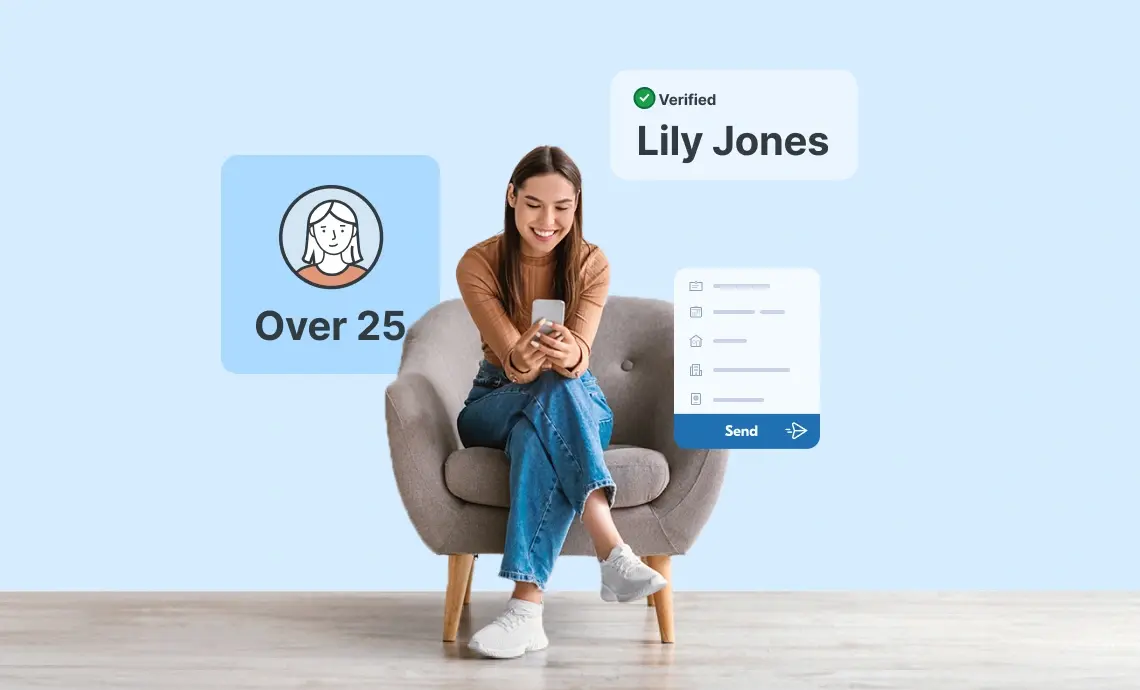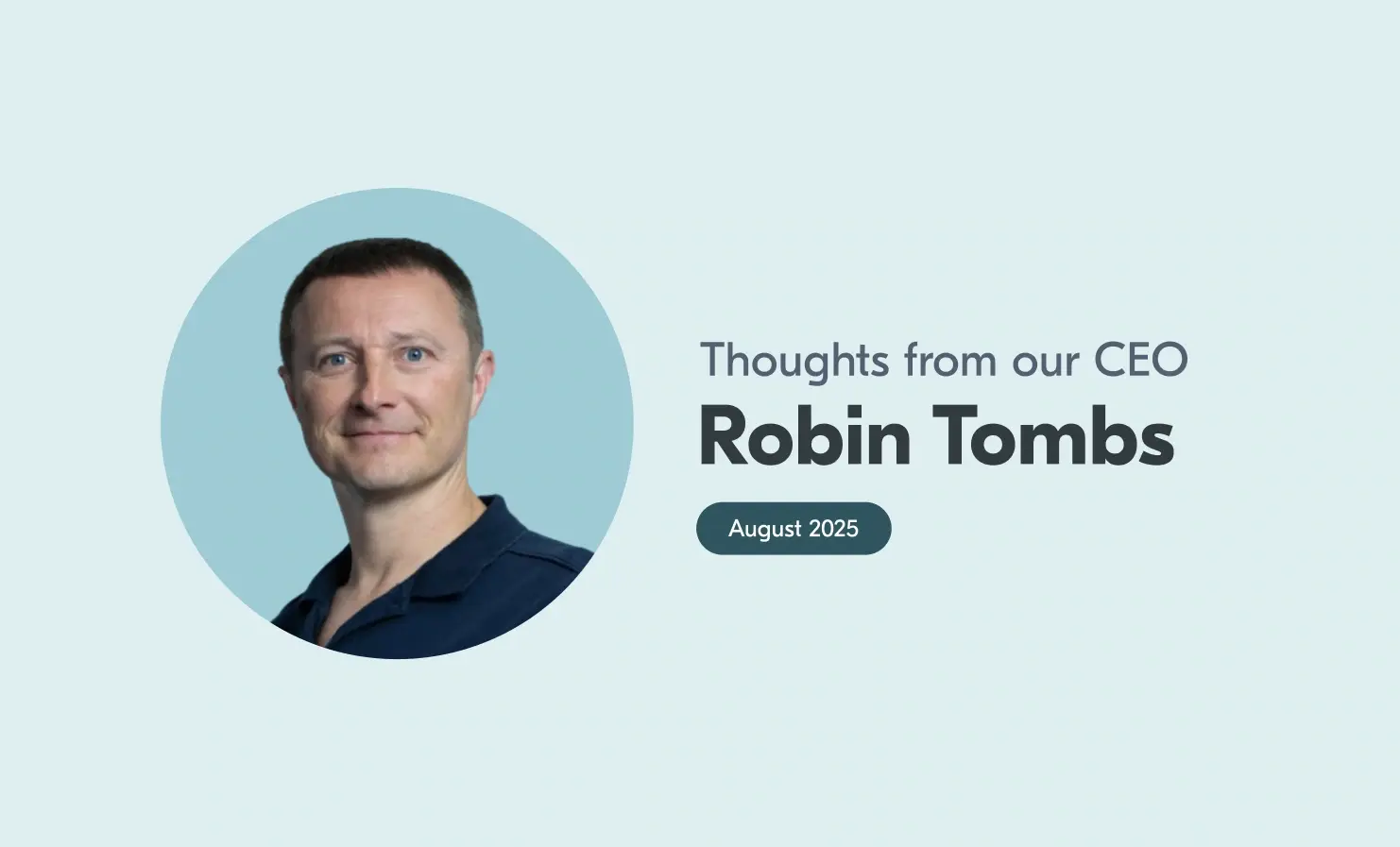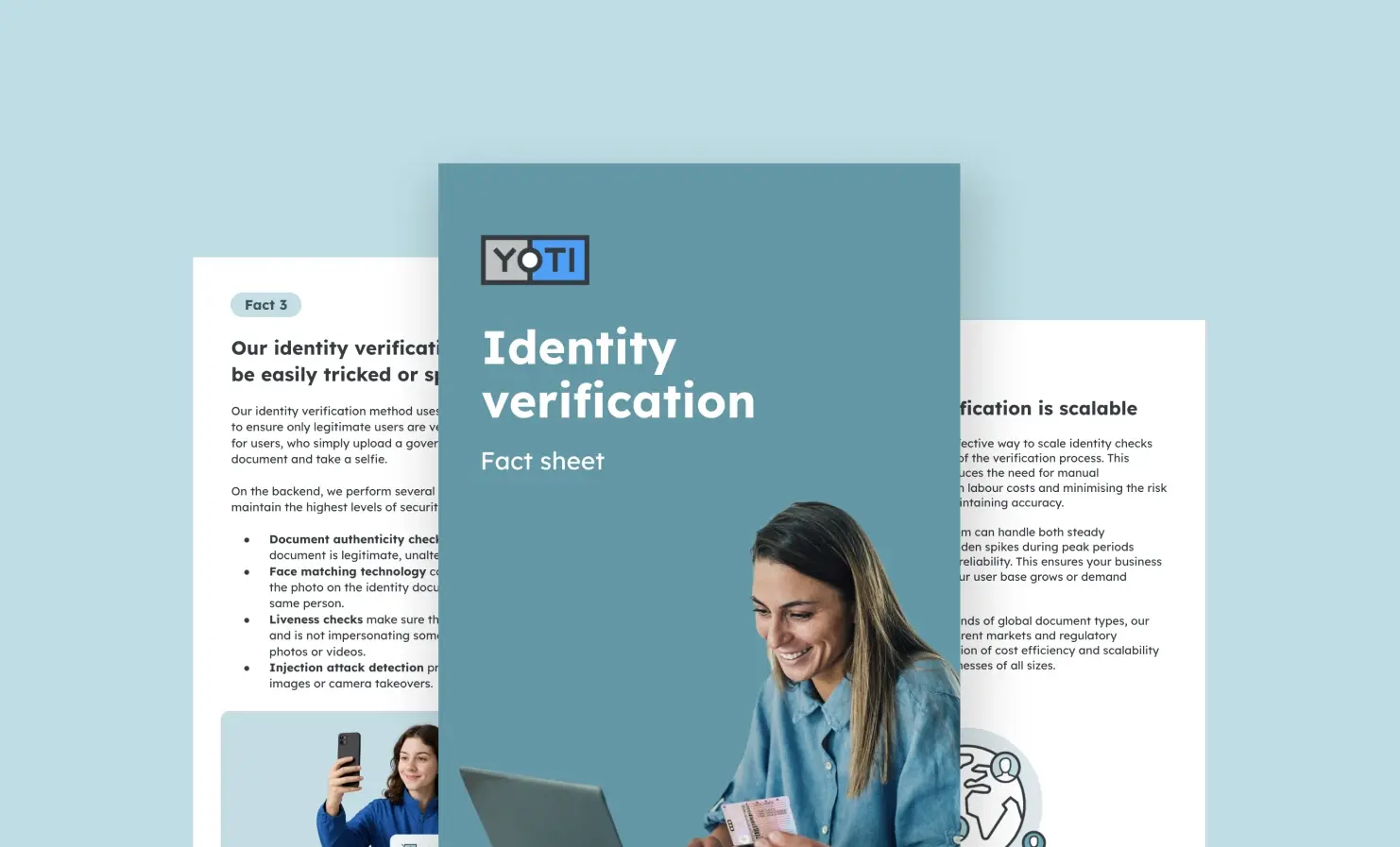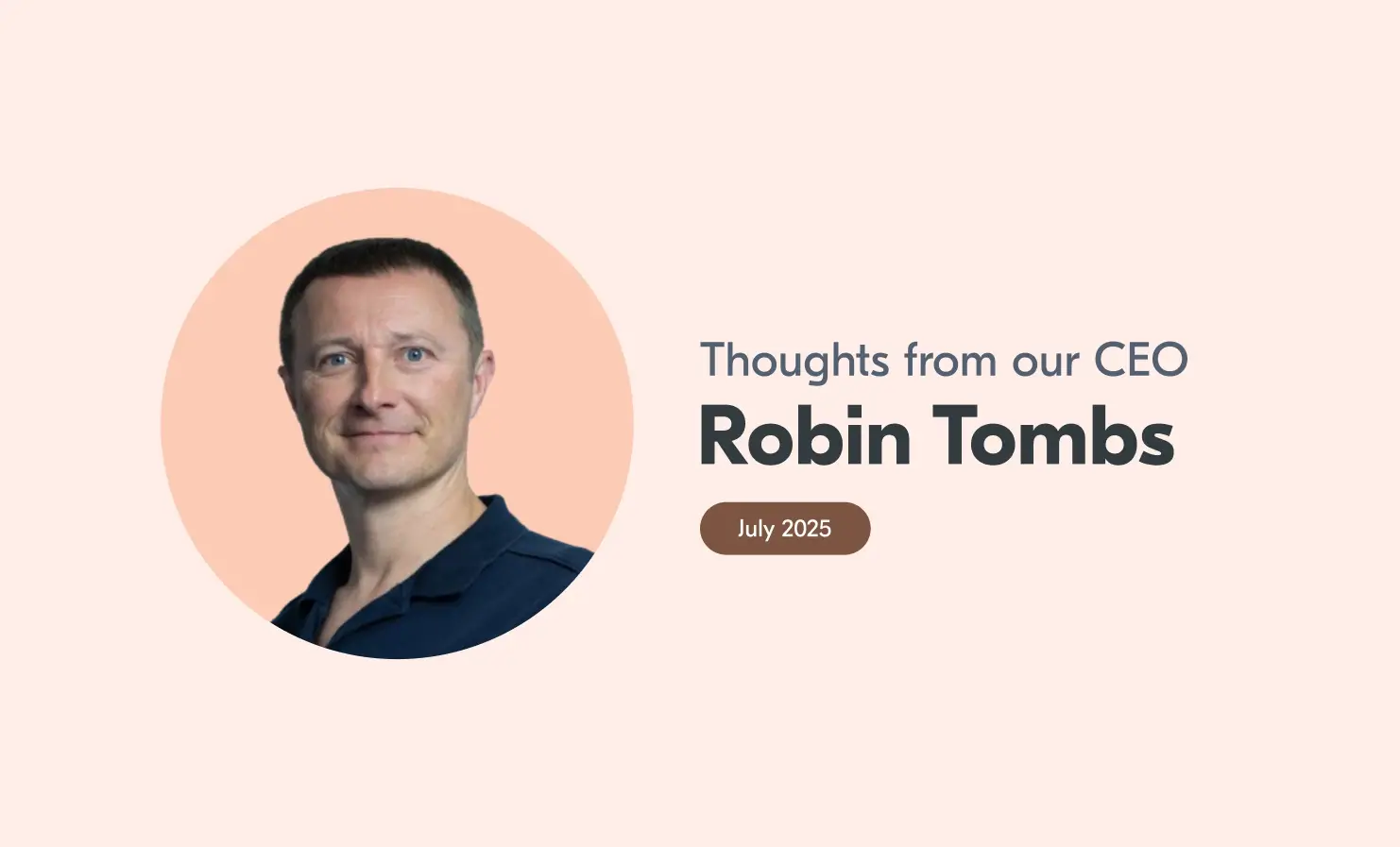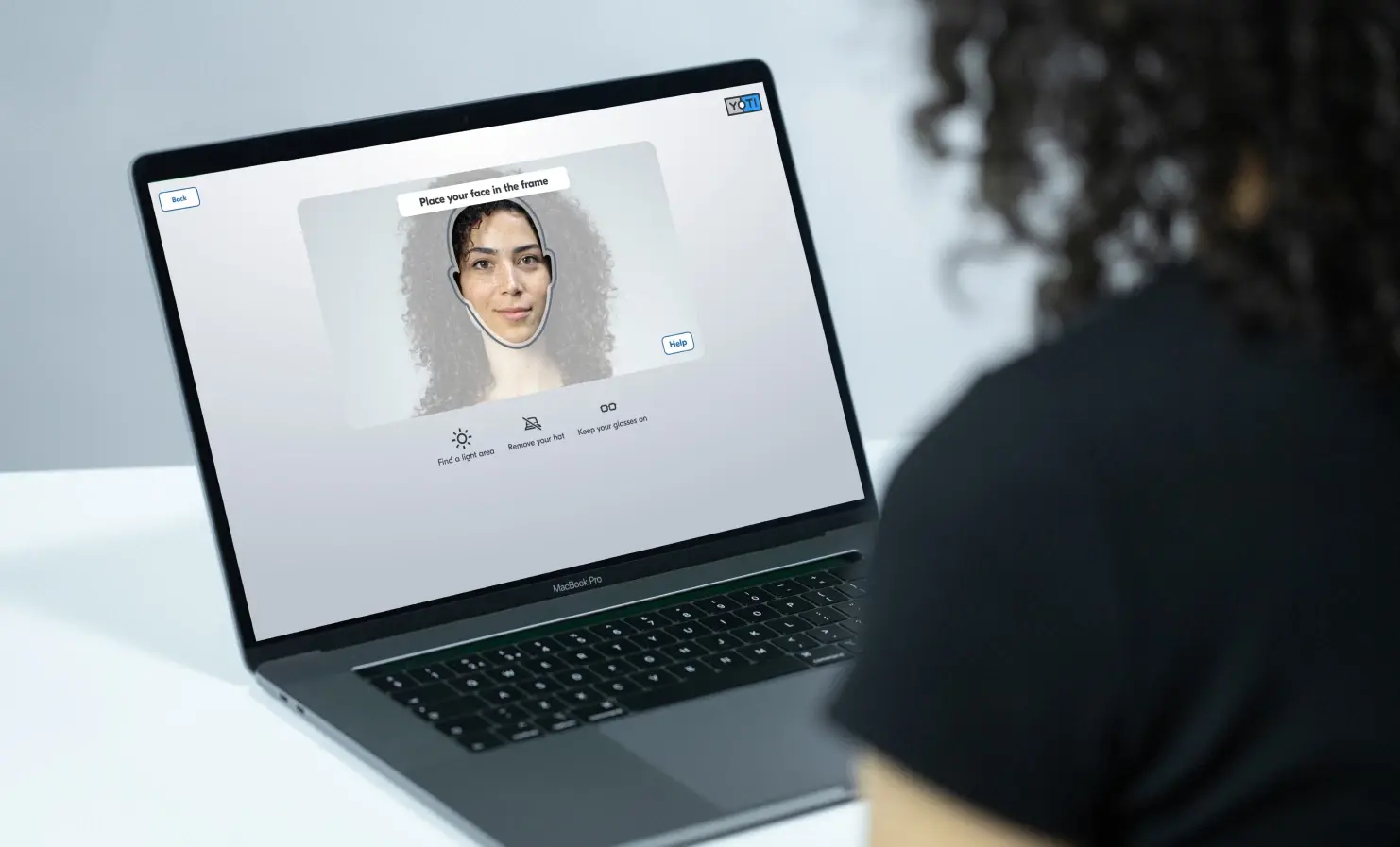Yoti
Your everyday digital essential: the Yoti Digital ID app
Think of the Yoti Digital ID like a Swiss Army knife – compact, versatile and ready for just about anything. It’s more than just a way to prove who you are; it’s a powerful, multi-use digital identity that fits in your pocket. Whether you’re proving your age, verifying your identity or securely swapping details with another person, the Yoti app brings everything together in one place. It’s a single, secure app packed with features designed to simplify your life, protect your privacy and give you control over your personal information. Key features Privacy-preserving – share only the details
Thoughts from our CEO
In this blog series, our CEO Robin Tombs will be sharing his experience, whilst focusing on major themes, news and issues in the world of identity verification and age assurance. This month, Robin talks about Digital ID app downloads, Yoti becoming an Orchestration Service Provider and NIST ranking our latest facial age estimation model in first place for 13-16 year olds. Insights into Digital ID use following the Online Safety Act From Friday 25th July, the UK’s Online Safety Act required many businesses across the porn, social media, livestreaming, dating and some gaming sectors to perform age checks.
Identity verification: the facts
It’s becoming increasingly essential to check that users are who they say they are. The rise in cyber attacks, data breaches and online financial crime has pushed companies across multiple industries to adopt more reliable and advanced verification methods. As a result, identity verification has become a crucial part of securing online transactions and interactions. It helps reduce identity theft, protect sensitive data and allows businesses to comply with regulations. We believe people and businesses should make up their own minds about whether they’d like to use our identity verification technology – based on the facts. [vc_btn title=”Read the facts”
Digital ID for the Online Safety Act: effective, private, reusable
For years, we’ve helped businesses carry out millions of age checks – particularly using our facial age estimation technology, which offers a quick, privacy-preserving way to estimate someone’s age without collecting personal details. But since the UK Online Safety Act came into force on 25th July, we’ve seen growing demand for our Digital ID. More people are choosing it as a secure and privacy-preserving way to prove their age online. In fact, when the Online Safety Act came in, Yoti was the second most popular app in the App Store. Whether it’s to access age-restricted content or platforms, people
Thoughts from our CEO
In this blog series, our CEO Robin Tombs will be sharing his experience, whilst focusing on major themes, news and issues in the world of identity verification and age assurance. This month, Robin focuses on the Online Safety Act, talking about facial age estimation accuracy rates, the increase in Digital ID usage and reaction to the new legislation coming into effect. Online Safety Act sparks Digital ID boom The UK’s Online Safety Act came into effect on Friday 25th July, delivering some bumper results for Yoti. We launched our “Porno Pete” video across TikTok, YouTube, Instagram and Facebook
Meet our anonymous facial age estimation technology
We developed our facial age estimation technology to provide a secure and private way to prove your age, without sharing identity documents or personal details like name or date of birth. It’s fast, accurate and anonymous. Here’s how our facial age estimation technology works, how it’s designed and why it’s one of the most privacy-friendly solutions available. What is facial age estimation? Facial age estimation is a safer and easier way to prove your age to access age-restricted goods, services and content. Completing a facial age estimation takes seconds – all you need to do is take a

